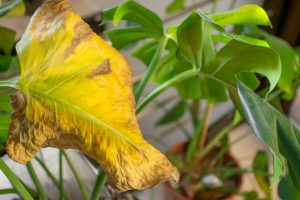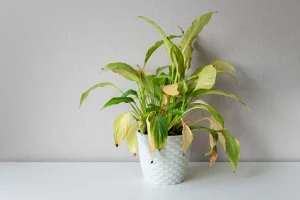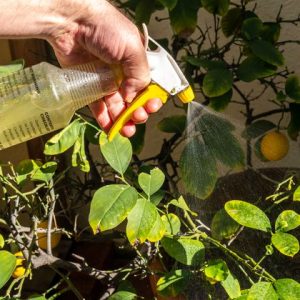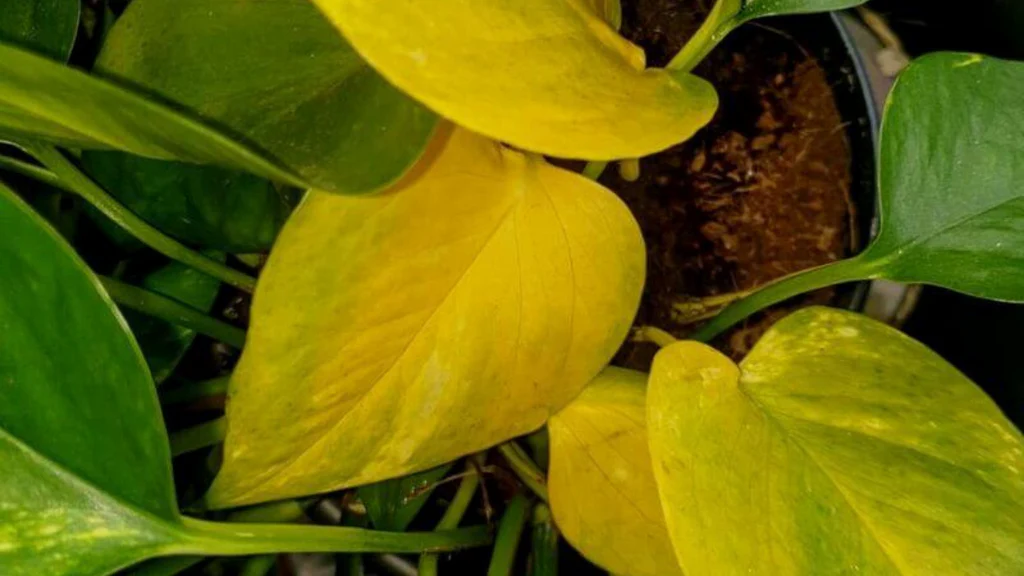Contents
- 1 Why Indoor Plants Turn Yellow (Causes & Fast Fixes)
- 1.1 What Yellow Leaves Really Mean
- 1.2 1. Overwatering (Most Common Cause)
- 1.3 2. Underwatering
- 1.4 3. Lack of Light
- 1.5 4. Nutrient Deficiency
- 1.6 5. Temperature or Humidity Stress
- 1.7 6. Pests or Root Damage
- 1.8 Quick Reference: Common Causes & Fixes
- 1.9 FAQs About Yellow Indoor Leaves
- 1.10 Related Articles
- 1.11 Final Thoughts on Why Indoor Plants Turn Yellow
Why Indoor Plants Turn Yellow (Causes & Fast Fixes)
Few things worry plant lovers more than seeing once-green leaves turn yellow. Don’t panic — yellowing is your plant’s way of asking for help. The good news? You can usually fix it fast once you know what’s causing it.
Here’s how to identify the reason your indoor plants are turning yellow — and the simple steps to bring them back to vibrant health.
What Yellow Leaves Really Mean
When leaves lose their green color, it’s often due to stress — environmental, nutritional, or watering-related. The chlorophyll (what makes leaves green) breaks down when the plant isn’t getting what it needs.
Common causes include:
Overwatering or underwatering
Lack of light
Nutrient deficiency
Temperature stress
Pests or root problems

1. Overwatering (Most Common Cause)
Overwatering suffocates roots, preventing oxygen from reaching them — and yellow leaves soon follow.
Signs:
Wet, soggy soil
Mushy or dark roots
Foul smell near the base
Fix:
Let the top 2 inches of soil dry before watering again.
Ensure pots have proper drainage holes.
Use a light, airy mix with perlite or coco coir.
A Soil Moisture Meter on Amazon helps you water only when your plant truly needs it — no guessing required.
2. Underwatering
Dry soil can cause leaves to yellow and drop prematurely.
Signs:
Soil pulling away from the pot edges
Crispy or curling leaf tips
Slow growth
Fix:
Water deeply until it drains out the bottom.
Mist foliage lightly if air is dry.
Consider a self-watering pot for more consistent hydration.
These Self-Watering Pots on Amazon make watering effortless and prevent both over and underwatering.

3. Lack of Light
Plants use light for photosynthesis — too little light = less energy and fading leaves.
Signs:
Pale yellow leaves
Stretched, leggy growth
No new leaves or buds
Fix:
Move the plant to a brighter spot with indirect sunlight.
Rotate pots weekly to keep growth even.
Use a full-spectrum grow light if natural light is limited.
Recommended Tools & Essentials
Want to stop yellowing leaves for good? These essentials keep your plants thriving:
💧 [Soil Moisture & pH Meter] – monitor soil hydration and acidity levels.
🌿 [Full-Spectrum Grow Light] – ensures strong photosynthesis year-round.
🪴 [Balanced Liquid Fertilizer] – provides the nutrients your plants crave.
Using the right tools makes it easier to spot early signs of stress and keep your plants healthy and green.
4. Nutrient Deficiency
Yellowing can also mean your plant isn’t getting enough nutrients — especially nitrogen, iron, or magnesium.
Signs:
Older leaves yellow first (nitrogen)
New leaves pale with dark veins (iron)
Patchy yellowing (magnesium)
Fix:
Feed every 3–4 weeks during the growing season.
Use a balanced 10-10-10 fertilizer or a specialized indoor plant feed.
Flush soil occasionally to remove salt buildup.
Try Miracle-Gro Indoor Plant Food for an easy, nutrient-balanced boost that promotes lush green leaves.
5. Temperature or Humidity Stress
Indoor plants can be sensitive to sudden changes in their environment. Cold drafts, heat vents, or low humidity can all cause yellow leaves.
Fix:
Keep plants away from heaters, air conditioners, or cold windows.
Maintain humidity between 40–60%.
Mist leaves occasionally or use a small humidifier nearby.
6. Pests or Root Damage
If yellowing is spreading fast or comes with spots or holes, pests may be to blame.
Fix:
Check under leaves and near soil for gnats, mites, or aphids.
Spray with a natural neem oil solution weekly.
Trim heavily damaged leaves and isolate affected plants.
Neem Oil Spray on Amazon kills pests naturally and keeps your plants fungus-free.

Quick Reference: Common Causes & Fixes
| Cause | Common Signs | Quick Fix |
|---|---|---|
| Overwatering | Soft yellow leaves | Dry soil, improve drainage |
| Underwatering | Crispy yellow tips | Water thoroughly |
| Lack of light | Pale yellow color | Move to brighter area |
| Nutrient deficiency | Patchy yellowing | Feed monthly |
| Temperature stress | Sudden color change | Adjust humidity & placement |
| Pests | Spots, sticky leaves | Use neem oil spray |
For detailed care guidance, see the Royal Horticultural Society’s houseplant guide.
FAQs About Yellow Indoor Leaves
1. Should I remove yellow leaves from my plant?
Yes — remove them gently to allow your plant to focus energy on healthy new growth.
2. How long does it take for plants to recover?
You’ll usually see improvement within 2–3 weeks once the root cause is fixed.
3. Can yellow leaves turn green again?
Unfortunately, no. But new leaves will grow healthy if conditions improve.
Related Articles
Final Thoughts on Why Indoor Plants Turn Yellow
Yellow leaves are your plant’s early warning system — not a death sentence. Once you identify the cause, fixing it is simple. With proper watering, light, and nutrients, your indoor plants will bounce back quickly, greener and healthier than ever.

